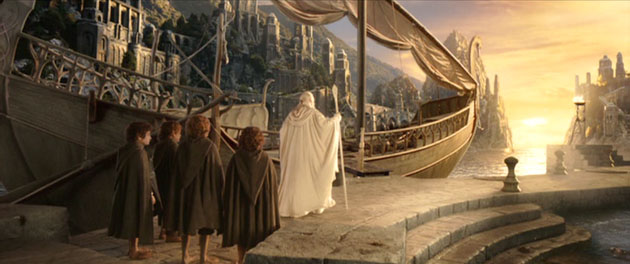Grant Major

AS: I interviewed Kim Sinclair a while back and he mentioned Whale Rider as one of his favorite New Zealand films.
GM: Kim’s good, oddly enough I’ve never worked with him. I’ve known him as part of the film business here. I was pleased to see he’s on your site.
AS: On Whale Rider you had to build several whales?
GM: Yes, we made all the beached whales for that. We also made a part of a whale which Paikea rode when she went into the sea. Quite tricky actually. All the smaller ones were made of silicon and had aqualung divers that could animate them from inside. They worked the blow-holes with compressed air. The big one was really difficult, it was right on the tideline where all the waves come crashing in. Of course it was a very tidal beach so the tideline would shift all the time. We had ballast tanks in the big whale that we had to fill up to keep it stable. We had to continually empty the ballast tanks to move it. We had to winch the thing up and down the beach in between shots to keep the thing in the right place. We had a sea anchor and a land anchor. It was a hell of a piece of maritime engineering to make that work. Of course it was a huge sculpting and casting job as well.
AS: Weren’t there some creatures in The Lord of the Rings that you had to move around with cranes as well?
GM: The Oliphants. Likewise they were huge, huge sculpts and they had these sort of backpacks which had all the soldiers on top. They were huge and we also needed cranes to move them around.
AS: In King Kong was that whole ship a set?
GM: The ship itself was built several times. We had an actual ship which was hugely modified. We rebuilt the bow of the ship. We changed the whole superstructure on top of it. That was the Venture that you saw when it was at sea. And then we built the ship again on the backlot on a big sort of tilting mechanism to tip the thing up for when it hit the rocks. And then we built the interior pretty much all in one piece except the bridge was built in a separate set. And that was a whole interior build at a stage.
AS: It gimbaled back and forth?
GM: The exterior, backlot one did. The huge, big steel structure. Actually we made it again a forth time in miniature as well when it was touring around the rocks. And there was a digital version as well.
AS: Say someone is just starting out in the business. Do you have any advice for them to avoid any pitfalls?
GM: I suggest for people wanting to train up to get into this sort of thing they should get a degree in architecture. Or go to film school and learn to be a production designer with all the requisite drafting skills. You must be able to draw. A lot of art schools these days don’t encourage drawing or don’t actively teach drawing. But I think drawing is very, very important. And computer skills now. The young kids are overtaking me now with the ability to use 3D Studio MAX and Rhino and these sorts of things. Having experience in those sorts of programs also gets you in the door. You can be brought in for a specific job, to design a 3D set or something like that, and then once you’re in the art department, at least in New Zealand, you can move around within that. Coming to the project with skills is really important.
Tom, this is a wonderful blog, thanks for the info.
Do you have any advice for aspiring production designers? I live in Philadelphia and recently finished architecture school but I very much want to design films.
Glad to hear you like the blog! The best advice I’ve found is to just get out there and start doing it. Work on low budget videos, short films, commercials, anything you can get your hands on for low money. A lot of these directors will call you when they start doing features. And then call you again when the features get bigger budget. K.K. Barrett started with commercials and music videos for Spike Jonze, Grant Major started on smaller movies with Peter Jackson, and Jack Fisk rented a van and brought his own tools out to Colorado to go do Terence Malick’s Badlands. He not only found an auteur to work with throughout his career, he also met his future wife, Sissy Spacek.
Also, you may want to move to LA or New York or anywhere there are schools like USC, AFI, NYU where talented directors are just starting out and looking for designers….
Pingback: STH032: Gandalf the Stern « SQPN: Secrets of The Hobbit
Thanks so much for the response.
I’m actually working on a short film with an old friend of mine who just graduated from USC and is trying to become a director so I guess I am on the right track! He lives in and will be shooting the film in San Diego but we’ve been able to work together so far by way of email and it’s been a lot of fun. I guess I will see what comes of it! If nothing else I’ll have some material to add to my portfolio.
Thanks again!
Pingback: Laurence Bennett
Pingback: Rick Heinrichs
Pingback: STH032: Gandalf the Stern - SQPN.com